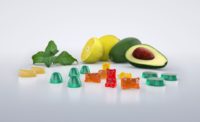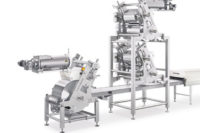
How healthy can fats and oils get? Just like partygoers trying to do the limbo, it’s amazing to see how low, in this instance, healthy fats and oils technologists can go. Consider the Food Ingredients Europe show in Frankfurt this November where three different confectionery fats/oils are on the “short list” for Food Ingredients Excellence Awards 2009 in the confectionery innovation category.
AarhausKarlshamn’sDeliar product addresses the need for confectionery manufacturers that are looking for a non-hydrogenated filling fat. Because it’s based on non-lauric and non-trans fat materials,Deliar allows manufacturers to improve the nutritional profile of their products while maintaining the same density as a filling with a higher fat content. Most importantly, it also reduces ingredient costs.
Capable of being combined with other ingredients such as alcohol, nut paste, cereal and other fats,Deliar has excellent melting properties and high bloom stability. Moreover, because it’s sufficiently heat stable, it can be coated with chocolate.
GivenDeliar’s “endless textural variations” and its ability to work with many other ingredients, this fat expands the possibilities for those confectioners looking to introduce innovative aerated confections.
Fuji Oil Europe’sRedusat also tackles the current saturated fats issue. Research strongly points to saturated fats increasing the risk of cardiovascular diseases.
For food technologists, however, saturated fats give structure to food products.
Redusat contains less than half the amount of saturates, while keeping the same structure, the company says.
Three years in development, the patent-pendingRedusat can help lower saturated fat content by as much as 50%, depending upon the product item. And the saturated fat that remains in theRedusat helps reduce cholesterol levels rather than increase it.

The product already is used successfully in the large-scale production of chocolate products and is shown to have a very constant and continuous crystallization behavior compared to other non-hydrogenated and non-trans filling fats. Such behavior enables high-quality processing of fats.
Ironically, the increasing health awareness associated with saturated fats has focused greater attention on cocoa butter.
As Ed Wilson, v.p. of sales and marketing for AarhausKarlshamn USA, points out, “Cocoa butter has always been considered neutral when it came to nutritional discussions. Today, I would even say that cocoa butter is grinning as a plus neutral in nutritional discussions due to the presence of stearic acid, which research is showing to be neutral in discussions relating to cholesterol.”
Wilson foresees Cocoa Butter Equivalents (CBEs) finding more acceptance “as they deliver performance and maintain eating quality but at a reduced cost to the manufacturers.”
Nevertheless, he emphasizes that “perceived limits on labeling of these products will continue to slow their growth.”
Of course, as demonstrated by recent fats and oils introductions, it’s amazing to see how low healthy fats and oils can go. No doubt, further breakthroughs are in the works.




